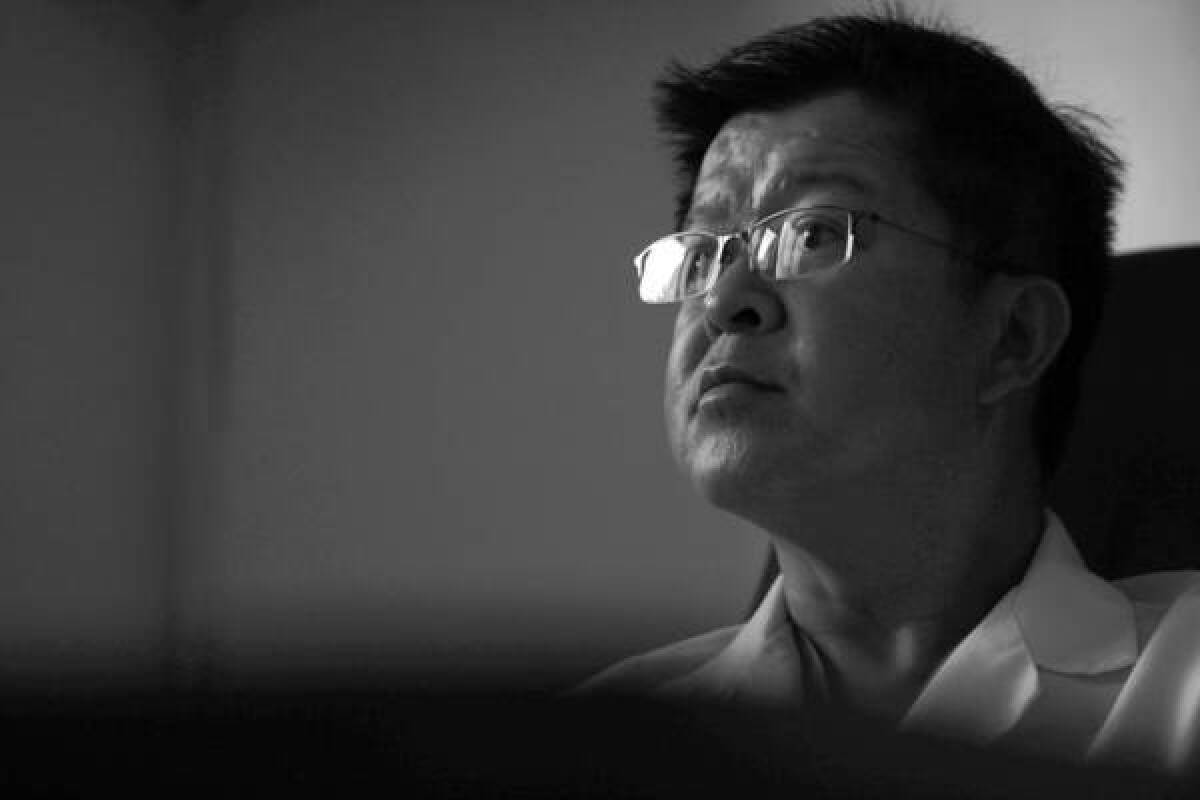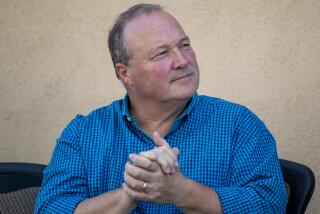A shortsighted ‘cure’ for prescription meds’ abuse

- Share via
An Orange County pain specialist already in the spotlight over deaths from prescription medications has racked up another patient overdose death.
The coroner has ruled that Wayne Oviatt died in January of a mix of prescription drugs, including morphine, which Dr. Van H. Vu had been prescribing for him.
Vu has lost 17 patients to drug overdoses since 2006, according to coroner’s records analyzed by Times reporters Lisa Girion and Scott Glover. He is being investigated by the state medical board, but there are no restrictions on his pain management practice.
This is the sort of case that feeds concern that dangerous painkillers are too easy to get. The Times’ investigation into rising prescription overdose deaths has sparked a flurry of proposed constraints.
But it’s also shown that the segment of doctors who account for a big portion of overdose deaths from prescription abuse is small. And their outsized stories eclipse how complicated it is to rein in use of a medication that many doctors rely on and many patients think they need.
The use of narcotic painkillers has quadrupled in the last decade; so have deaths related to their use. That’s led to efforts to restrict the dispensing of Vicodin, Norco and Lortab, which are easy to abuse.
Campaigns backed by law enforcement, politicians and a physicians’ group would rewrite the rules for use of those hydrocodone-based drugs. The medication would no longer be marketed to treat moderate or chronic pain. Prescriptions would be limited to fewer pills and be more difficult to refill.
Supporters say this squares with research suggesting the drugs lose their effectiveness over time and carry a high risk of addiction.
But I made the point in my Tuesday column that restricting hydrocodone’s use seems both inadequate and unfair. Restrictions would deprive patients and physicians of options. And this is not just a medical issue, it’s a social problem, as well.
Trying to squash it with rule-book-as-blunt-object means punishing the masses of pain sufferers for the misfortune and indiscretions of a relative few.
::
I got emails from patients this week worried about losing their drugs. Like 75-year-old Diana Williamson, whose ailment, under the proposed rules, wouldn’t be serious enough to warrant her Norco prescription.
“I have chronic pain from arthritis & take one 10 mg. Norco each afternoon. I can then get around my house & be independent, doing a bit of housework,” she wrote. “Please help us persuade them not to take away our needed Meds.”
And Louis Brandt of North Hills, who’s been suffering since a botched back surgery a year ago: “I have had physical therapy, aquatherapy, acupuncture, epidural and more, none of which gives me any relief,” he wrote. “The only relief I get is from Vicodin.... Why would anyone want to take the only thing away from me that works?”
I heard, too, from Judy Rummler, whose son Steve, 43, a musician and a marathon runner, died of an overdose using the only medication that had relieved the chronic pain of a nerve injury he’d suffered with for years.
Her son was prescribed hydrocodone by “a highly-regarded, well-intentioned” physician. He took it as directed but became addicted. He did well in a drug rehab program, but overdosed when it ended and he relapsed.
His mother later found something he’d written: “At first it was a lifeline.... Now it is a noose around my neck.”
That’s what makes reform so hard. We don’t have much to offer people living with unremitting pain.
And it’s not just a few irresponsible physicians, but a whole panoply of desperation-driven rationalizations and hustles that lead to overdoses.
There are so many exits to seal off: The guy who fakes pain to trick a doctor into writing prescriptions, then peddles pills on the streets. The teenager who pilfers meds from mom’s medicine chest and passes them to friends. The patient who needs a few more pills than prescribed each week to keep up with pain relief.
We ought to have learned by now that blanket prohibitions are never very effective when it comes to drugs. And trying to put hydrocodone off limits now is like trying to force the genie back into the bottle.
::
There’s a cocktail of forces that brought us to this epidemic level: clueless doctors, reckless patients, highly potent medication, and the difficulty inherent in trying to assess someone else’s pain.
Science may be headed to the rescue: A pharmaceutical company is working on developing non-addicting opioids. And research into the “neural signature” of pain suggests that doctors may soon be able to measure physical discomfort by scanning images of our brains.
We are early in this journey; it’s only been in the last few decades that we’ve recognized pain as an ailment worthy of treating medically.
So it’s troubling to hear good doctors say that the frenzy over patient deaths is making them leery of treating pain.
I spoke with one who stopped treating pain management patients and shut down his medical practice. “One death, one complaint … and your reputation is ruined,” he said.
Now he’s a medical school professor, teaching new doctors how to judge the motives of their patients: Check the state’s prescription database, require prior medical records, screen their urine, and don’t be afraid to touch them.
“You want to believe your patients. But people are dying, and physicians need to own this,” he said. “Are these potentially dangerous drugs? Of course. But patients suffer if fear takes hold.”
More to Read
Sign up for Essential California
The most important California stories and recommendations in your inbox every morning.
You may occasionally receive promotional content from the Los Angeles Times.










